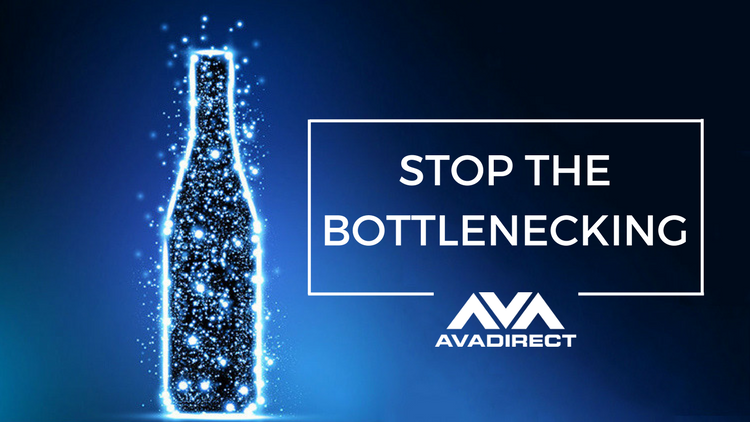Imagine this: You’re sitting at your computer, you’ve just opened your new game and put it in your system. You turn the game on, load its glorious graphics and click start. You get about 3 minutes into the game, but your graphics are lagging so bad you can’t possibly keep playing. The problem is, you just got that new graphics card, so it should be working perfectly. Right?
Before you throw your system out the window (figuratively, of course), there’s a reasonable explanation for why this is happening. It’s called bottlenecking.
The Definition of Bottlenecking:
Bottlenecking is a hardware limitation that occurs when the capacity of a system is limited by a single component. This means that there’s too much information being loaded to a component or its being loaded too slowly compared to the rest of the components in your rig.
On the other hand, it may not be that your components are slowing you down at all. Bottlenecking can also occur without slowing down your computer. If you install a brand new graphics card, but some of the other components are not as new, you may see improved gaming performance and better graphics, but the downside is that your graphics card will probably never reach its full potential. Your computer will only perform as best as its oldest part, so keep this in mind when deciding to upgrade.
Which Component IS IT?!
When a computer bottlenecks, it is most often at the GPU, CPU or HDD. The hardest part is figuring out which one is causing the bottleneck. To do this, you have to measure the load while you’re running your game. For example, using an app like MSI Afterburner or FRAPS will help you properly measure the load of your graphics card. Looking at the Memory Usage, Core Clock, and Overall Usage will let you know if any of the pieces of your graphics card are causing the bottleneck. If your GPU memory is over 90% it’s possible that your machine is bottlenecking because of the lack of GPU memory. On the other hand, if your GPU usage is lower than 90% it could be your CPU.
Another way to determine if you’re having bottlenecking problems is to search the internet on forums and other tech websites to find combinations that work (or don’t work). This is extremely tedious and could mean investing hours into researching the components in your system. In addition, you might never find the answer to your bottlenecking problem.
The third alternative is that it may not be your computer at all. As games are becoming more advanced, they’re demanding more and more out of your computer. This means that they need more graphics power than some cards can handle. The game that you’re playing can greatly affect the performance of your computer components. The newer the game, the more advanced it is and the more it demands from your system. If you have older parts, you may not be able to play that brand new game because your computer isn’t capable of keeping up with its demands.
There are so many reasons that a computer could be under-performing, but using these tips along with some research on the internet and it shouldn’t be too hard to determine what the problem is. Now, all you have to do is find the solution…
How to Stop the Bottlenecking:
Depending on the component that’s causing the bottlenecking, one option would be to upgrade it. The most difficult part of the whole process is diagnosing exactly which component is causing the issue. Replacing the misfit will definitely help speed up your build. After all, your build is only as fast as your slowest part.
Another potential solution would be to overclock the component that is causing the slowdown. This would only provide a fractional difference in performance compared to replacing the part. In addition, it’s possible that even overclocking the current component may not provide enough improvement to show results. If this is the case, then it would be a waste of your time and resources.
When your system bottlenecks, there’s only so much that you can do. Unfortunately, the only way to cure bottlenecking is to identify exactly where the bottlenecking is occurring. After you identify where it is, then you can decide how to proceed in order to fix the problem. Now, when your computer starts acting up, you’ll be able to problem solve and get your machine back to maximum performance. Happy Gaming!
